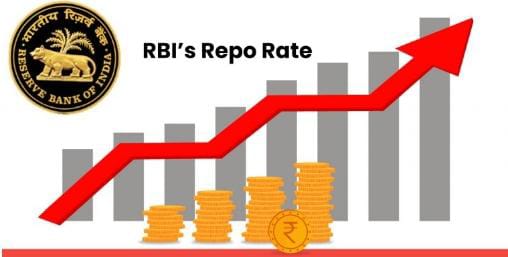Repo Rates and Reverse Repo Rates
People visit commercial banks daily to deposit their money or obtain a loan, such as for a car or a home. The bank pays them interest on their savings/deposits at a set rate. The bank charges them interest at a set rate on loans. The interest rate that banks charge on loans is typically higher than the interest rate that they pay on deposits.
People visit commercial banks daily to deposit their money or obtain a loan, such as for a car or a home. The bank pays them interest on their savings/deposits at a set rate. The bank charges them interest at a set rate on loans. The interest rate that banks charge on loans is typically higher than the interest rate that they pay on deposits.
Have you ever wondered or tried to know the functioning of this?
Now we are going to talk about one of the most important functions of the Central bank of a country Reserve Bank of India in case of our country. These include Repo rates and Reverse Repo rates.In the event of a cash shortage, the central bank of a country (in India, the Reserve Bank of India) loans money to commercial banks at a repo rate. The Repo Rate is used by monetary authorities to control inflation. To prevent banks from borrowing from the central bank during times of inflation, central banks raise the Repo Rate. As a result, the money supply in the economy is lowered, which aids in inflation control. If inflationary pressures lessen, the central bank takes the opposite attitude. Repo and Reverse Repo rates are part of the liquidity adjustment program.

The repo rate is higher than the reverse repo rate since the RBI is also a bank and must earn more than it pays. The repo rate is at 4%, with the reverse repo rate being 3.35 percent. After a lengthy period, the Reserve Bank of India increased the Repo Rate by 40 basis points to 4.40 percent in May 2022. Since May 2020, the Reserve Bank of India's repo rate has stayed unchanged at 4%. Repo rates variation for the last 4 years has been shown in the below-given table:
With the inflationary pressure on the economy, the Reserve Bank of India is likely to raise the policy repo rate by 40 basis points this month and hike it further by 0.35 percent in August, taking it to the pre-pandemic level of 5.15 percent, according to economists and financial market analysts.
Updated by RBI on
Repo rate
4 May 2022
4.40%
22 May 2020
4.00%
27 March 2020
4.40%
04 October 2019
5.15%
07 August 2019
5.40%
06 June 2019
5.75%
04 April 2019
6.00%
07 February 2019
6.25%
01 August 2018
6.50%
06 June 2018
6.25%
How Does Repo Rate Affect the Economy?
A repo rate is a key tool in India's monetary policy, with the ability to control the country's money supply, inflation, and liquidity. Furthermore, the level of repo has a direct impact on banks' borrowing costs. The cost of borrowing for banks will rise when the repo rate rises, and vice versa.

When Inflation is rising:
During periods of high inflation, the RBI makes concerted efforts to reduce the flow of money in the economy. Increasing the repo rate is one approach to accomplish this. Borrowing becomes prohibitively expensive for enterprises and sectors, slowing investment and money supply in the economy. Following the epidemic, the Indian government proposed many economic changes and lowered interest rates in order to help the economy recover. The consumer's liquidity and purchasing power increased as a result of this. "The rate rises are part of an effort to bring inflation under control. Increasing borrowing costs discourages consumer and company expenditure and helps to keep inflation in check." As a result, it has a negative influence on economic growth, which helps to keep inflation under control.
Increasing the Market's Liquidity
When the RBI needs to inject funds into the system, on the other side, it reduces the repo rate. As a result, borrowing money for various investment goals is less expensive for enterprises and industries. It also expands the entire money supply in the economy. This, in turn, enhances the economy's growth rate. Changes in repo rates can have a direct influence on large-ticket loans like home loans. The lower repo rates are intended to boost growth and improve the country's economic development. Consumers will borrow more from banks, bringing inflation under control. A decline in the repo rate can lead to the banks bringing down their lending rate. This can prove to be beneficial for retail loan borrowers. However, to bring down the loan EMIs, the lender has to reduce its base lending rate. As per the RBI guidelines, banks/financial institutions are required to transfer the benefit of interest rate cuts to consumers as soon as possible. Thus, the Repo rate and Reverse repo rate is one of the hottest topics in the economy of any country which directly impacts the lives of its citizens as well as big corporates.
